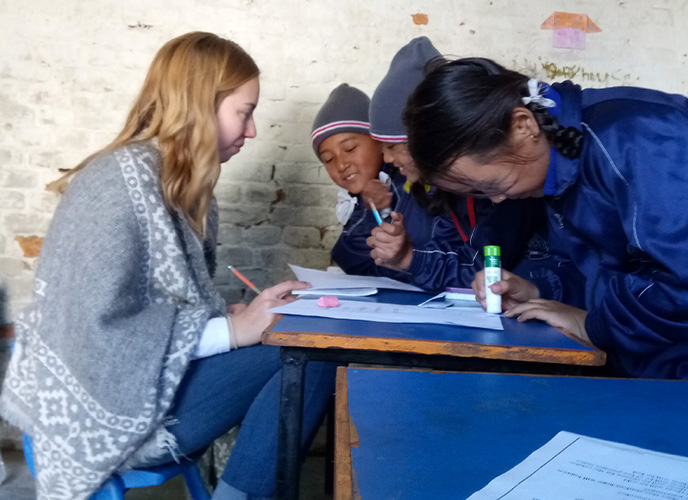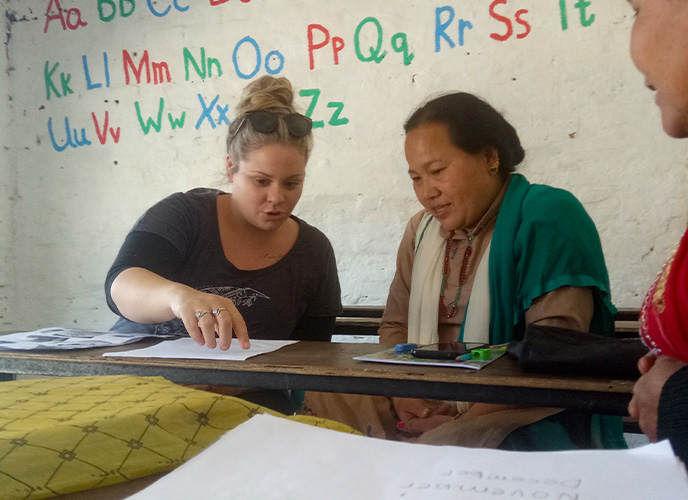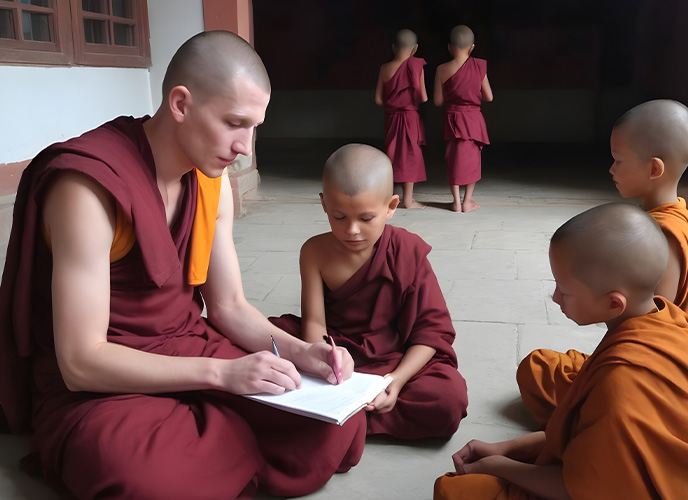Volunteering Opportunities in Tsum Valley
Volunteer in Tsum Valley
Location :
Northern part of Gorkha District, within the Gandaki Province of Nepal.
Climate :
Tsum Valley experiences a temperate climate with cool summers and cold winters. Monsoon rains occur from June to August, providing vital water for agriculture.
Elevation :
Ranges from 1,900m to 3,500m above sea level.
Population :
Approximately 1,500 households.
Min. Volunteering Duration :
2 Weeks
Trek Difficulty :
Moderately challenging, involving steep ascents and descents, river crossings, and high-altitude terrain.
About Tsum Valley
Nestled in the remote and captivating landscapes of the northern Gorkha District within Nepal's Gandaki Province, Tsum Valley stands as a testament to untouched natural beauty and ancient cultural traditions. This hidden gem, cradled at the base of the Himalayas, beckons adventurers and cultural enthusiasts alike with its pristine vistas, centuries-old monasteries, and the warm hospitality of its Tibetan-influenced communities.
Tsum Valley, often referred to as the "Hidden Valley of Happiness," remains secluded from mainstream tourism, preserving its authenticity and traditional way of life. The valley is home to ancient Buddhist monasteries such as Rachen Gompa and Mu Gompa, where ancient rituals and teachings continue to be practiced by resident monks and nuns. These monasteries, adorned with intricate murals, statues, and prayer wheels, serve as living repositories of Buddhist heritage and spirituality, attracting visitors seeking solace and spiritual enlightenment.
However, amidst its scenic splendor and cultural richness, Tsum Valley grapples with the challenges typical of remote regions. Limited access to quality education and healthcare services, infrastructural deficiencies, and socio-economic disparities pose significant hurdles for local residents striving for a better quality of life. The valley's rugged terrain and seasonal weather patterns also present challenges for sustainable agricultural practices and livelihood opportunities.
In this context, the role of volunteering in Tsum Valley emerges as not only valuable but essential. Volunteers bring a diverse range of skills, expertise, and perspectives, which can be leveraged to address key needs and empower local communities. Volunteer-led initiatives can focus on various areas such as education, healthcare, infrastructure development, environmental conservation, and cultural preservation.
Volunteer teachers can support local schools by providing quality education, resources, and training for teachers, improving learning outcomes for children and youth. Healthcare professionals can organize health camps, provide medical services, and promote health awareness to improve overall community well-being. Engineers and construction volunteers can collaborate on infrastructure projects such as building schools, water systems, and sustainable energy solutions, enhancing the valley's resilience and development capacity.
Furthermore, volunteers passionate about environmental conservation can engage in activities such as reforestation, waste management, and eco-tourism initiatives, safeguarding Tsum Valley's natural heritage for future generations while promoting sustainable tourism practices.
Beyond tangible contributions, volunteering fosters meaningful exchanges and mutual learning between volunteers and local residents. It bridges cultural gaps, promotes cross-cultural understanding, and nurtures relationships based on respect, empathy, and shared experiences. These interactions not only enrich volunteers' perspectives but also empower local communities to preserve their heritage, strengthen social cohesion, and explore sustainable pathways for growth.
In essence, volunteering in Tsum Valley is not just about lending a helping hand; it's about building sustainable partnerships, nurturing cultural resilience, and creating pathways for inclusive and holistic development in one of Nepal's most enchanting and culturally significant regions.
Available Opportunities

Teaching and Teacher Training
Enjoy the best of nature while training teachers and teaching to students at a rural school in Tsum Valley.

Women Empowerment
Empower women in villages by providing education related to health and hygiene, finance management, child raising etc.

Monk & Nun Teaching
Learn culture and traditions of Buddhist monks while teaching young monks several subjects.

